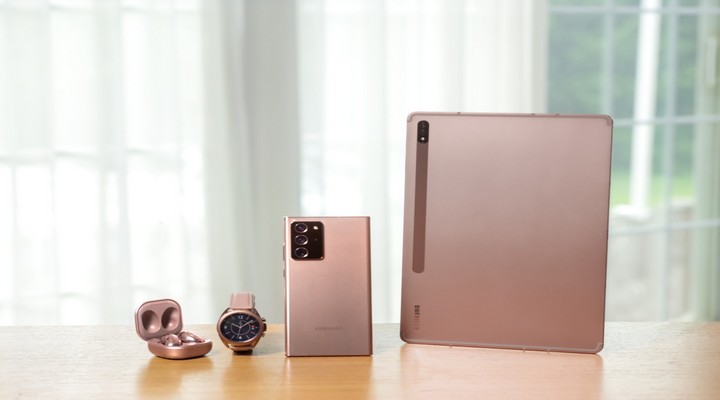At its first-ever virtual Galaxy Unpacked event, Korean tech giant Samsung revealed five new products. These include two smartphones, a tablet, a wearable smartwatch, and its latest wireless earbuds. These products not only promise to bring the future in your hands, but they are also determined to set benchmarks in their respective categories.
With the sole purpose of making life easier with technology, these products are launched as a part of the Galaxy ecosystem. This is meant to allow the user to freely access his data across multiple devices. For example, the Samsung Notes app features auto-save and syncing capabilities, so the user can continue his work right where he left off, from device to device. Samsung Notes easily straightens your messy handwriting into legible penmanship.
Samsung has also partnered with Microsoft to increase the list of features it has to offer. The Galaxy Note20 series can be used as a portable gaming console, as it now supports official Xbox games. The gaming experience is further enhanced with its AI game booster and Bluetooth audio response optimization, and 240Hz touch latency on the Galaxy Note20 Ultra.
Along with the Note20 Ultra, Samsung also revealed the Galaxy Tab S7 and its big bro, the S7+. Since all the devices belong to the next generation, they naturally support 5G connectivity. The Galaxy tab S7 and S7+ offer seamless videoconferencing, fast downloads, and virtually lag-free streaming. The S7+ has a 12.4” Super AMOLED display, which is sure to immerse the user in whatever he chooses to watch.
Samsung knows how to pamper its audience and that’s what it has done with the Galaxy Watch3. With a slimmed-down version of its popular rotating bezel, the Galaxy Watch3 is practically a wearable computer. With the Blood oxygen feature, you can measure and track oxygen saturation over time, for fitness and wellness purposes. The new Samsung Health Monitor app on Galaxy Watch3 offers cuffless blood pressure and electrocardiogram measurements, available in markets where these features have been authorized. When a potential fall is detected, your location will be sent immediately to pre-designated contacts. Running Analysis will help you run better, improve form, and prevent injuries, while VO2 max follows your cardio progress to provide insight into oxygen consumption. For those who want to stay fit while being at home, Samsung Health provides more than 120 different home training programs so you can track your workout progress on your watch.
Galaxy Buds Live are the company’s next-generation earbuds and offer an unmatched experience. Combining AKG’s sound expertise with a 12mm speaker and a bass duct, the audio received is deep and rich so you can enjoy music the way the artist intended. Galaxy Buds Live comes with three microphones and Voice Pickup Unit for accurate phone calls.
Finally, Samsung introduced the Galaxy Z Fold2. It is the result of extensive market research and user feedback on the most requested upgrades and new features. The Galaxy Z Fold2 comes packed with two edge-to-edge, nearly bezel-less Infinity-O Displays. The Cover Screen is 6.2-inches and the massive Main Screen is 7.6-inches.
The Galaxy Note20 series and Tab S7 series will be available in select markets starting August 21, 2020. The company is expected to reveal the India price list as the launch date approaches.
